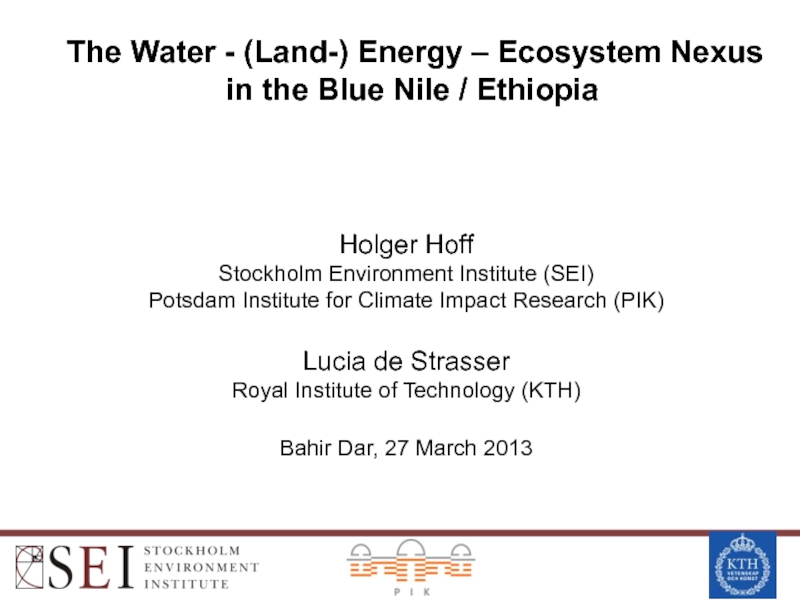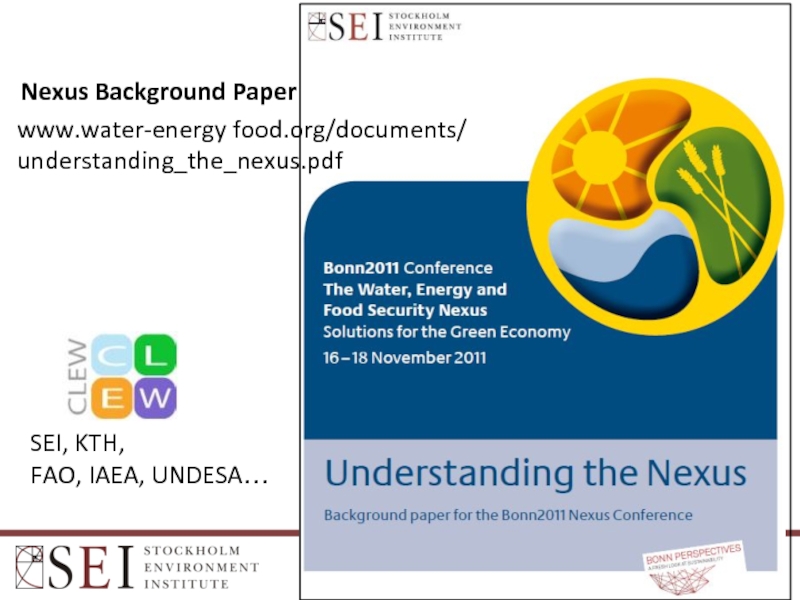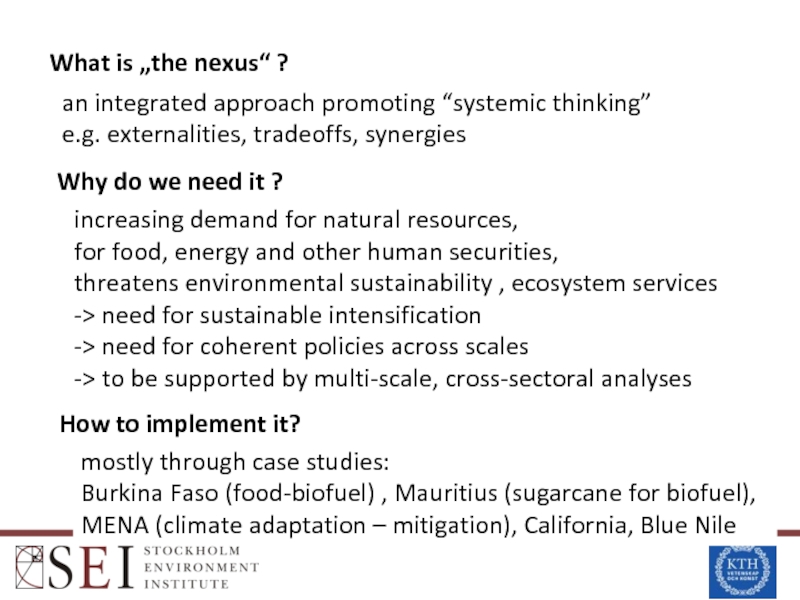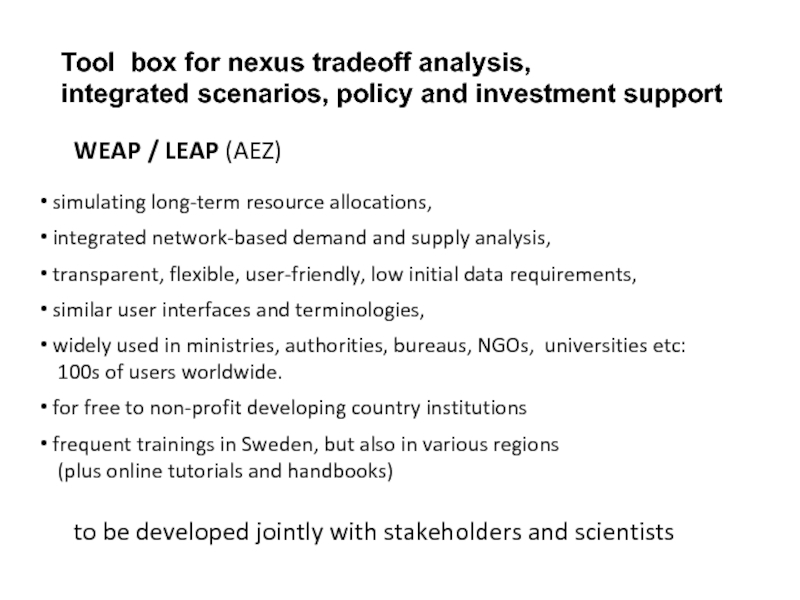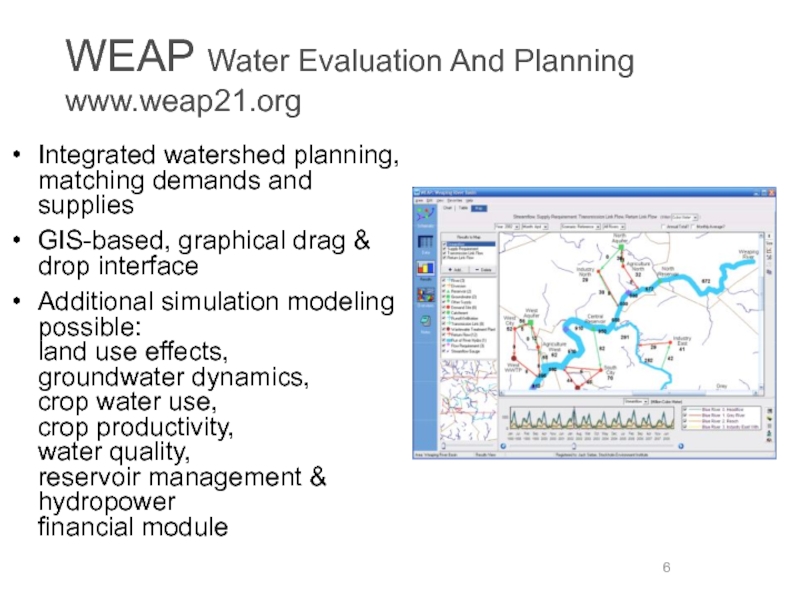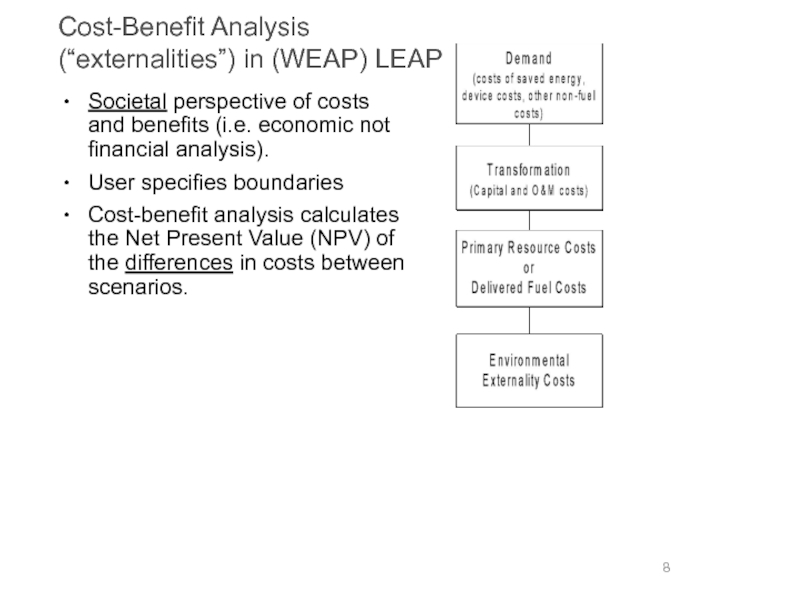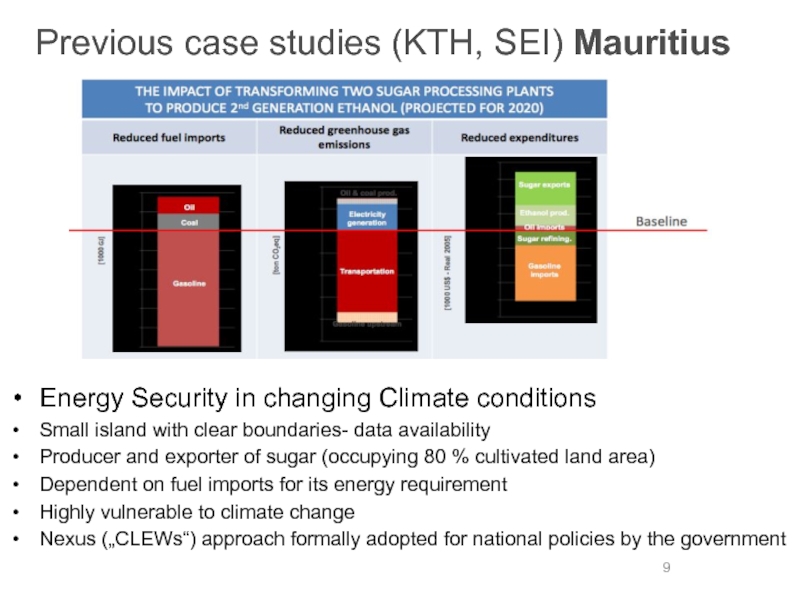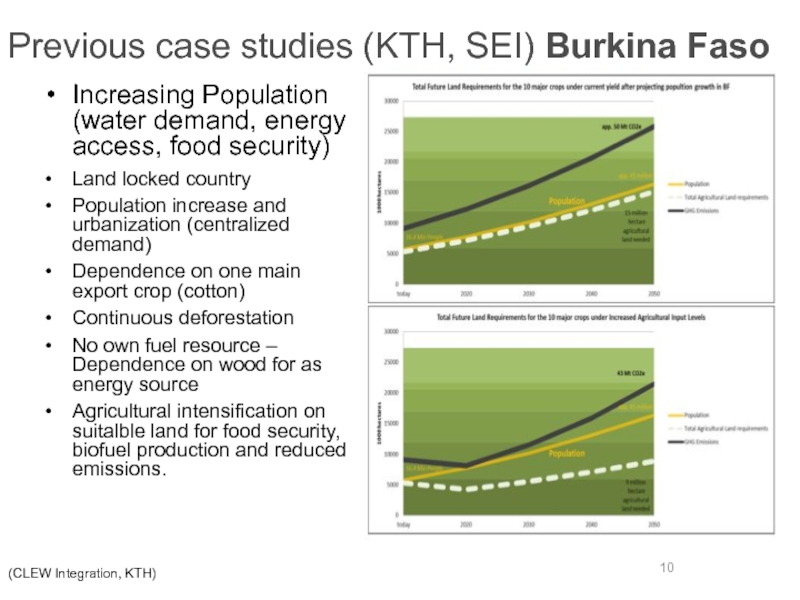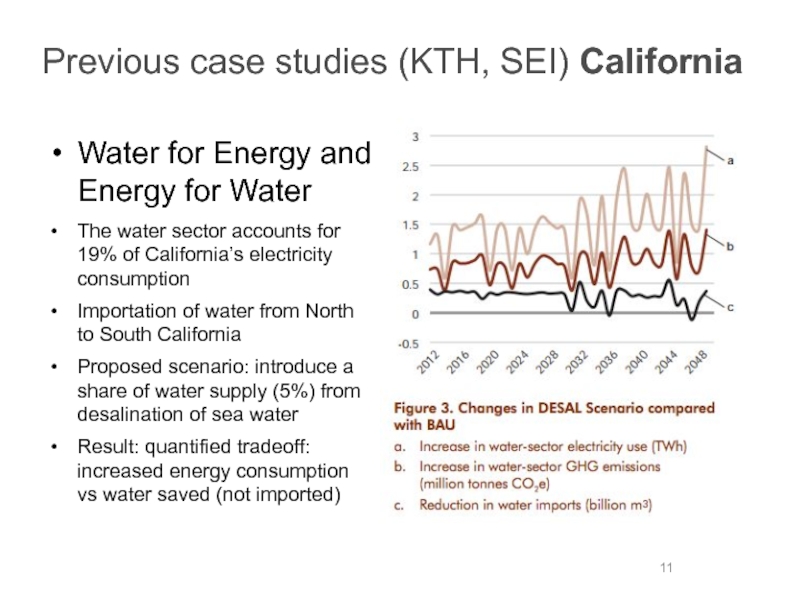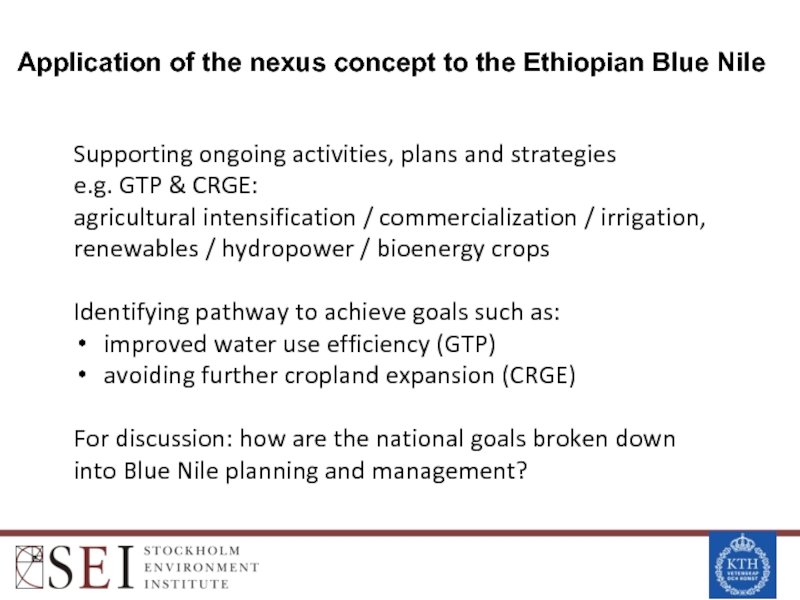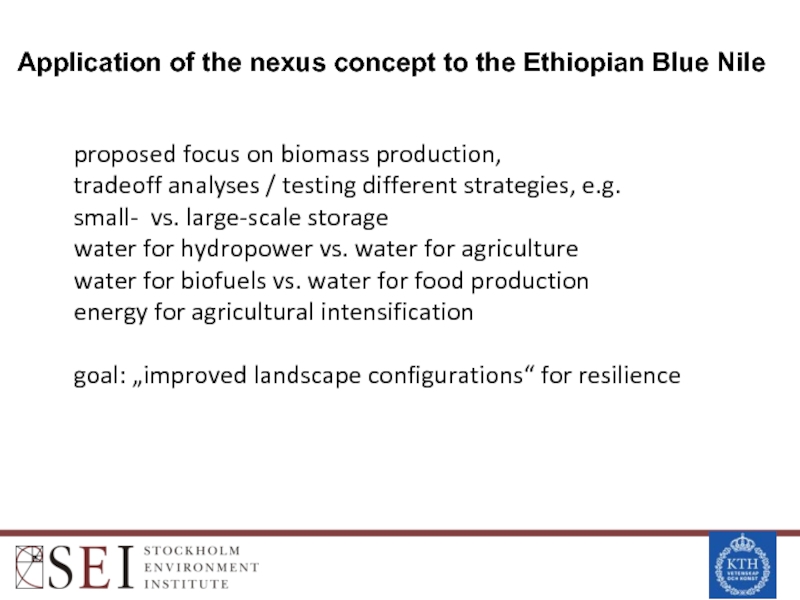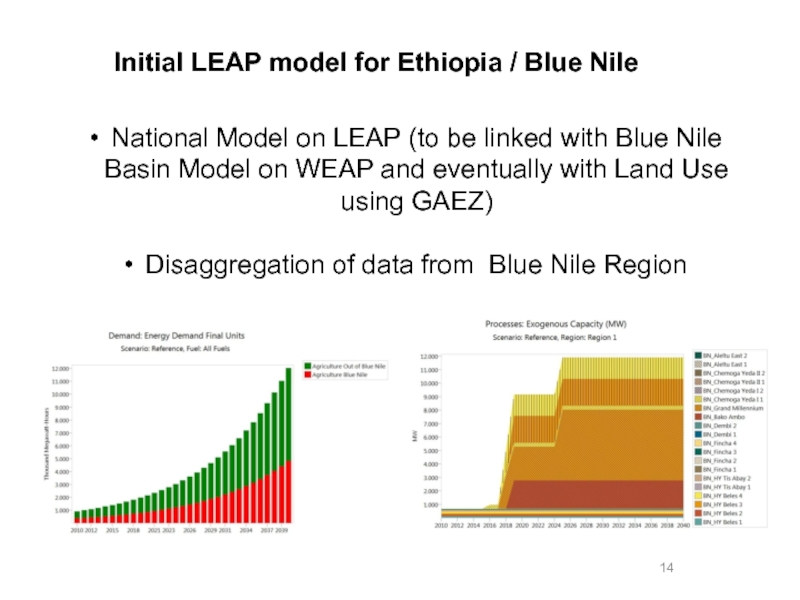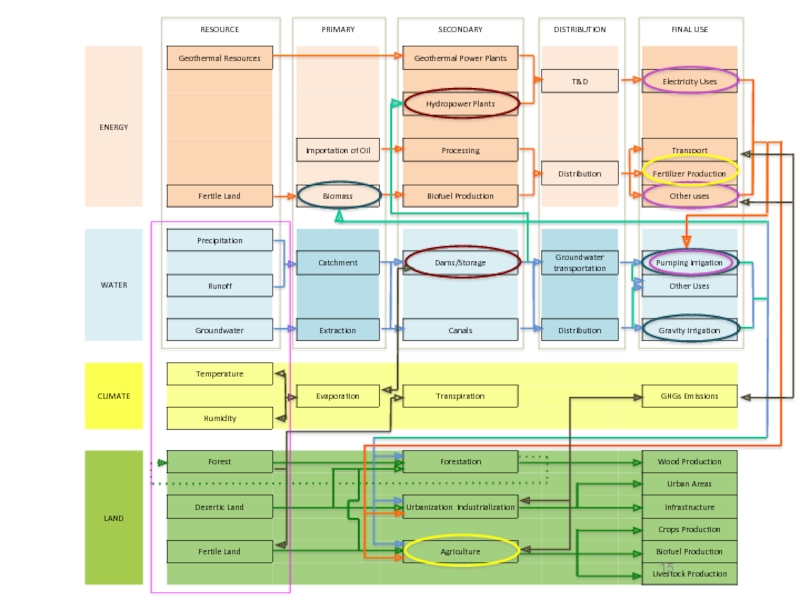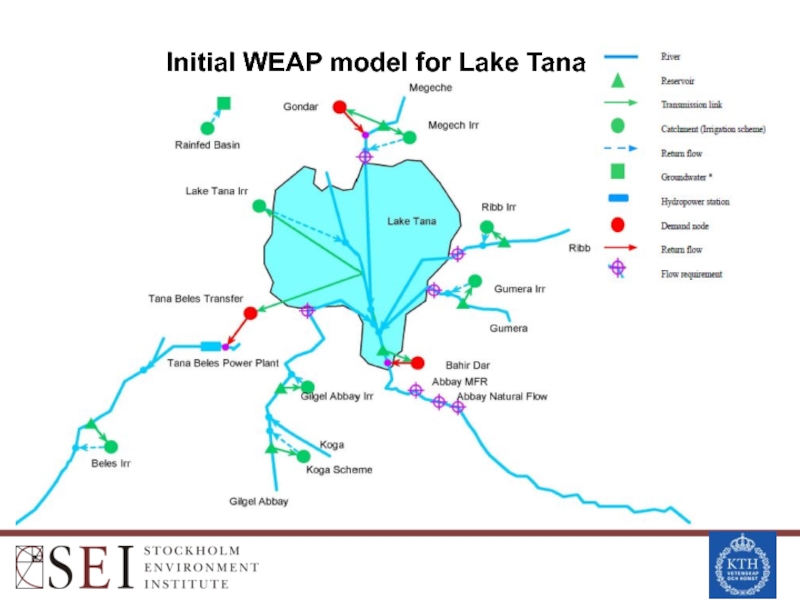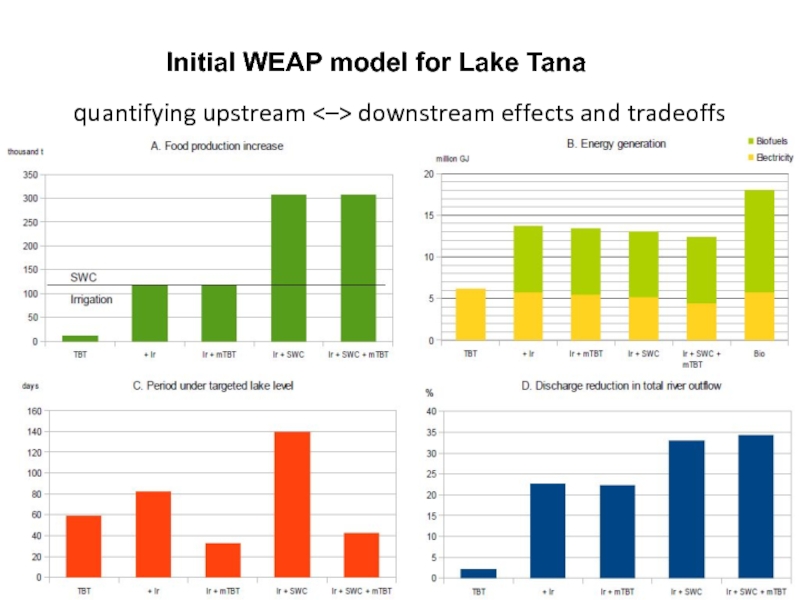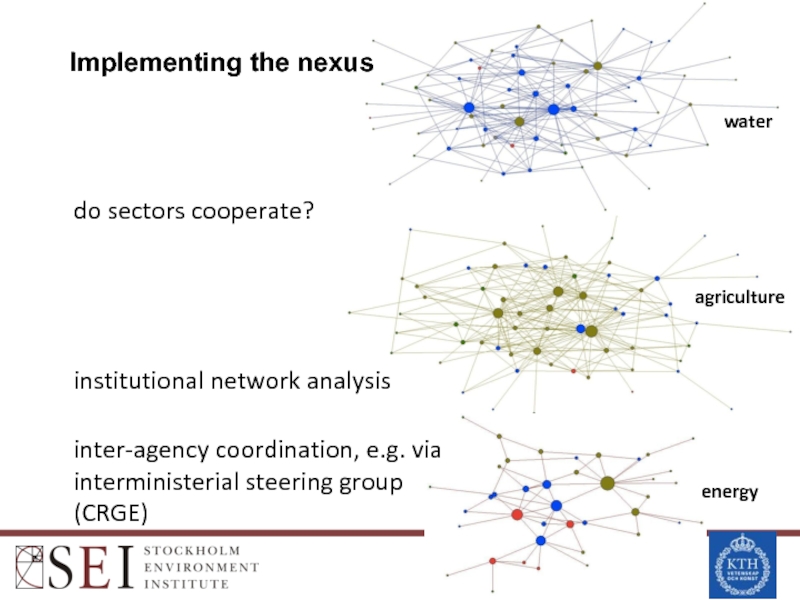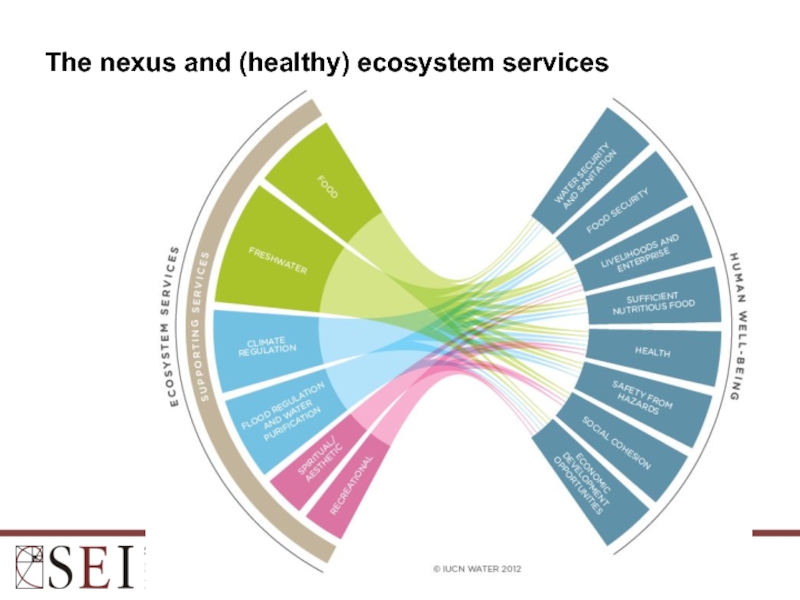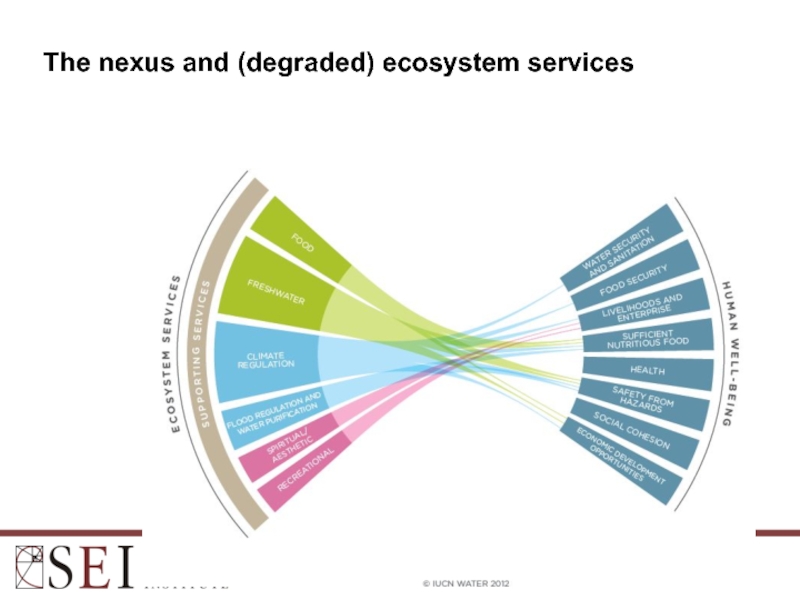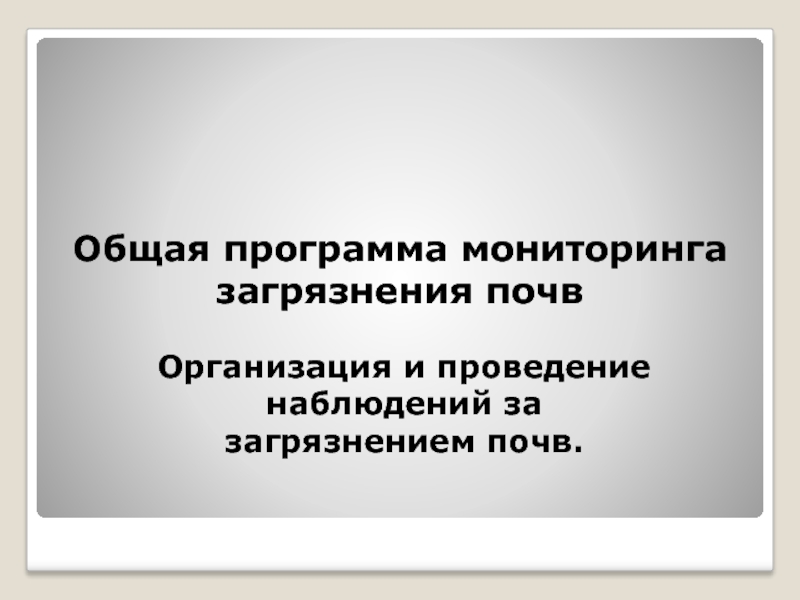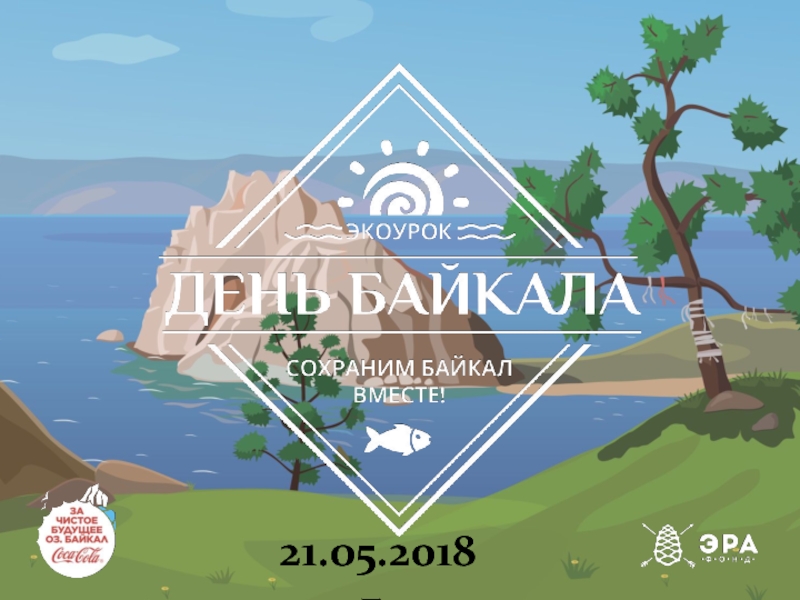Holger Hoff
Stockholm Environment Institute (SEI)
Potsdam Institute for Climate Impact Research (PIK)
Lucia de Strasser
Royal Institute of Technology (KTH)
Bahir Dar, 27 March 2013
- Главная
- Разное
- Дизайн
- Бизнес и предпринимательство
- Аналитика
- Образование
- Развлечения
- Красота и здоровье
- Финансы
- Государство
- Путешествия
- Спорт
- Недвижимость
- Армия
- Графика
- Культурология
- Еда и кулинария
- Лингвистика
- Английский язык
- Астрономия
- Алгебра
- Биология
- География
- Детские презентации
- Информатика
- История
- Литература
- Маркетинг
- Математика
- Медицина
- Менеджмент
- Музыка
- МХК
- Немецкий язык
- ОБЖ
- Обществознание
- Окружающий мир
- Педагогика
- Русский язык
- Технология
- Физика
- Философия
- Химия
- Шаблоны, картинки для презентаций
- Экология
- Экономика
- Юриспруденция
Ecosystem Nexus in the Blue Nile Ethiopia презентация
Содержание
- 1. Ecosystem Nexus in the Blue Nile Ethiopia
- 2. Nexus Background Paper www.water-energy food.org/documents/ understanding_the_nexus.pdf SEI, KTH, FAO, IAEA, UNDESA…
- 3. What is „the nexus“ ? an integrated
- 4. Tool box for nexus tradeoff analysis,
- 5. (CLEW Integration, KTH)
- 6. WEAP Water Evaluation And Planning www.weap21.org Integrated
- 7. LEAP Long range Energy Alternatives Planning System
- 8. Cost-Benefit Analysis (“externalities”) in (WEAP) LEAP Societal
- 9. Previous case studies (KTH, SEI) Mauritius Energy
- 10. (CLEW Integration, KTH) Increasing Population (water demand,
- 11. Water for Energy and Energy for Water
- 12. Application of the nexus concept
- 13. proposed focus on biomass production,
- 14. National Model on LEAP (to be linked
- 16. Initial WEAP model for Lake Tana
- 17. Initial WEAP model for Lake Tana quantifying upstream downstream effects and tradeoffs
- 18. do sectors cooperate?
- 19. The nexus and (healthy) ecosystem services
- 20. The nexus and (degraded) ecosystem services
Слайд 1 The Water - (Land-) Energy – Ecosystem Nexus
in the Blue
Слайд 2Nexus Background Paper
www.water-energy food.org/documents/
understanding_the_nexus.pdf
SEI, KTH,
FAO, IAEA, UNDESA…
Слайд 3What is „the nexus“ ?
an integrated approach promoting “systemic thinking”
e.g. externalities,
Why do we need it ?
increasing demand for natural resources,
for food, energy and other human securities,
threatens environmental sustainability , ecosystem services
-> need for sustainable intensification
-> need for coherent policies across scales
-> to be supported by multi-scale, cross-sectoral analyses
How to implement it?
mostly through case studies:
Burkina Faso (food-biofuel) , Mauritius (sugarcane for biofuel),
MENA (climate adaptation – mitigation), California, Blue Nile
Слайд 4
Tool box for nexus tradeoff analysis,
integrated scenarios, policy and investment
WEAP / LEAP (AEZ)
to be developed jointly with stakeholders and scientists
simulating long-term resource allocations,
integrated network-based demand and supply analysis,
transparent, flexible, user-friendly, low initial data requirements,
similar user interfaces and terminologies,
widely used in ministries, authorities, bureaus, NGOs, universities etc:
100s of users worldwide.
for free to non-profit developing country institutions
frequent trainings in Sweden, but also in various regions
(plus online tutorials and handbooks)
Слайд 6WEAP Water Evaluation And Planning
www.weap21.org
Integrated watershed planning, matching demands and supplies
GIS-based, graphical drag & drop interface
Additional simulation modeling possible: land use effects, groundwater dynamics, crop water use, crop productivity, water quality, reservoir management & hydropower financial module
Слайд 7LEAP Long range Energy Alternatives Planning System
Typically organized by sector, subsector,
Users can edit the tree on-screen using standard editing functions (copy, paste, drag & drop)
Structure can be detailed and end-use oriented, or aggregate (e.g. sector by fuel).
Слайд 8Cost-Benefit Analysis (“externalities”) in (WEAP) LEAP
Societal perspective of costs and benefits
User specifies boundaries
Cost-benefit analysis calculates the Net Present Value (NPV) of the differences in costs between scenarios.
Слайд 9Previous case studies (KTH, SEI) Mauritius
Energy Security in changing Climate conditions
Small island with clear boundaries- data availability
Producer and exporter of sugar (occupying 80 % cultivated land area)
Dependent on fuel imports for its energy requirement
Highly vulnerable to climate change
Nexus („CLEWs“) approach formally adopted for national policies by the government
Слайд 10(CLEW Integration, KTH)
Increasing Population (water demand, energy access, food security)
Land locked
Population increase and urbanization (centralized demand)
Dependence on one main export crop (cotton)
Continuous deforestation
No own fuel resource – Dependence on wood for as energy source
Agricultural intensification on suitalble land for food security, biofuel production and reduced emissions.
Previous case studies (KTH, SEI) Burkina Faso
Слайд 11Water for Energy and Energy for Water
The water sector accounts for
Importation of water from North to South California
Proposed scenario: introduce a share of water supply (5%) from desalination of sea water
Result: quantified tradeoff: increased energy consumption vs water saved (not imported)
Previous case studies (KTH, SEI) California
Слайд 12
Application of the nexus concept to the Ethiopian Blue Nile
Supporting ongoing
renewables / hydropower / bioenergy crops
Identifying pathway to achieve goals such as:
improved water use efficiency (GTP)
avoiding further cropland expansion (CRGE)
For discussion: how are the national goals broken down into Blue Nile planning and management?
Слайд 13
proposed focus on biomass production,
tradeoff analyses / testing different strategies,
small- vs. large-scale storage
water for hydropower vs. water for agriculture
water for biofuels vs. water for food production
energy for agricultural intensification
goal: „improved landscape configurations“ for resilience
Application of the nexus concept to the Ethiopian Blue Nile
Слайд 14National Model on LEAP (to be linked with Blue Nile Basin
Disaggregation of data from Blue Nile Region
Initial LEAP model for Ethiopia / Blue Nile
